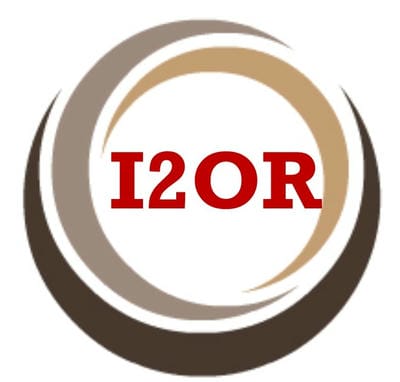Study of incisional hernia with onlay mesh repair
Abstract
Background: Any abdominal wall gap with or without a bulge in the area of a postoperative scar perceptible or palpable by clinical examination or imaging is defined as an incisional hernia. The present work was thus planned to study an incisional hernia and to evaluate the outcome of onlay mesh repair with reference to a technical difficulty, complication rate, and recurrence.
Methods: The study was conducted on all patients of primary incisional hernia above 18 years with the previous history of abdominal surgery and admitted for the treatment of an incisional hernia from November 2017 to April 2019.
Results: Majority of patients are in a group of 51-60 years, youngest was 22 year and oldest was 69 year with a mean age of 48.6 years, with female to male ratio 5:3, most common symptom was swelling in the abdomen,44% with irreducible swelling while 56% with reducible swelling in the abdomen,75% with lower and 25% with upper abdomen swelling, about 6% with incisional hernia between 1-2 years of previous surgery,total 94% after 2 years of previous surgery, 44% of incisional hernias occurred below the umbilicus in the midline. Laparotomy was the most common surgery causing hernia followed by LSCS, 63% patient had hernia defect of size 1-5cm, 31% had 5-10cm, and the remaining 6% had more than 10 cm.
Conclusion: For a short learning period for surgeons, the Onlay technique is a simple and effective repair, complications, and recurrence rates show to be apparently safe and require minor tissue dissection with an easy approach to the hernia repair.
Downloads
References
Korenkov M, Paul A, Sauerland S, Neugebauer E, Arndt M, Chevrel JP, et al. Classification and surgical treatment of incisional hernia. Results of an experts' meeting. Langenbecks Arch Surg. 2001;386(1):65-73.doi: https://doi.org/10.1007/s004230000182.
George CD, Ellis H. The results of incisional hernia repair: a twelve year review. Ann R Coll Surg Engl. 1986;68(4):185-187.
Mudge M, Hughes LE. Incisional hernia: a 10 year prospective study of incidence and attitudes. Br J Surg. 1985;72(1):70-71. doi:https://doi.org/10.1002/bjs.1800720127.
Cuschieri A, Steele RJC, Moossa AR, eds. Incisional Hernia. In essential Surgical Practice, 4th ed. New York:2002;169.
Bessa SS, Katri KM, Abdel-Salam WN, Abdel-Baki NA . Early results from the use of the Lichtenstein repair in the management of strangulated groin hernia. Hernia: 2007;11(3):239-242. doi:https://doi.org/10.1007/s10029-007-0207-6.
Society for Surgery of the Alimentary Tract. Guidelines: Surgical repair of incisional hernias. J Gastrointest Surg. 2004;8:369-370. doi:https://doi.org/10.1016/j.gassur.2003.11.028.
Kingsnorth A. The management of incisional hernia. Ann R Coll Surg Engl. 2006;88(3):252-260. doi:https://doi.org/10.1308/003588406x106324.
Othman IH, Metwally YH, Bakr IS, Amer YA, Gaber MB, Elgohary SA. Comparative study between laparoscopic and open repair of a paraumbilical hernia. J Egypt Soc Parasitol. 2012;42(1):175-182. doi:https://doi.org/10.12816/0006305.
Narayanaswamy T, Venugopal K, Nikshita N. Clinical study and management of incisional hernias: our experience. J Evo Med Den Sci.2013;47(2):9112-9118.
Manohar CS, Ramadev K. Management of incisional hernia by preperitoneal mesh repair. Int J Basic Med Sci.2010;1(3):12-19. doi:
Nanjappa BA, Mohanty A, Smile SR. Incisional hernia repair-a clinical study of 30 patients. Int J Current Res and Rev. 2013;5(15):35-41.
Jyothirmayi K, Ravitheja A, Reddy PC, Dushyanth. Clinical study and management of incisional hernia. J Evid Based Med Health. 2016; 3(36):1745-1748. doi:https://doi.org/10.18410/jebmh/2016/390.
Memon AA, Khan A, Zafar H, Murtaza G, Zaidi M. Repair of large and giant incisional hernia with onlay mesh: a perspective of a tertiary care hospital of a developing country. Int J Surg. 2013;11(1):41-45. doi:https://doi.org/10.1016/j.ijsu.2012.11.006.
Parekh JN, Shah DB, Thakore AB. Incisional hernia- a study of 76 cases. Ind J Surg 1988;50:49-53.
Machairas A, Misiakos EP, Liakakos T, Karatzas G. Incisional hernioplasty with Extraperitoneal onlay polyester mesh. Am J Surg 2004 ;70(8):726-729.
Hamy A, Pessaux P, Mucci-Hennekinne S, Radriamananjo S, Regenet N, Arnaud JP. Surgical treatment of large incisional hernias by an intraperitoneal Dacron mesh and an aponeurotic graft. J Am Coll Surg. 2003;196(4):531-534. doi:https://doi.org/10.1016/s1072-7515(03)00009-7.
Kingsnorth AN, Shahid MK, Valliatter AJ, Hadden RA, Porter CS. Open onlay mesh repair for major abdominal wall hernias with selective use of components separation and fibrin sealant. World J Surg 2008;32(1):26-30. doi:https://doi.org/10.1007/s00268-007-9287-9.
Andersen LP, Klein M, Gögenur I, Rosenberg J. Long-term recurrence and complication rates after incisional hernia repair with the open onlay technique. BMC Surg. 2009;9:6. doi:https://doi.org/10.1186/1471-2482-9-6.
Burger JW, Luijendijk RW, Hop WC, Halm JA, Verdaasdonk EG, Jeekel J. Long-term follow-up of a randomized controlled trial of suture versus mesh repair of incisional hernia. Ann Surg. 2004;240(4):575-578. doi:https://doi.org/10.1097/01.sla.0000141193.08524.e7.

Copyright (c) 2020 Author (s). Published by Siddharth Health Research and Social Welfare Society

This work is licensed under a Creative Commons Attribution 4.0 International License.


 OAI - Open Archives Initiative
OAI - Open Archives Initiative


















 Therapoid
Therapoid

